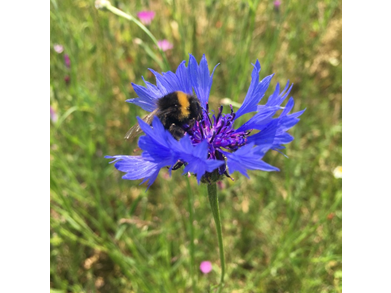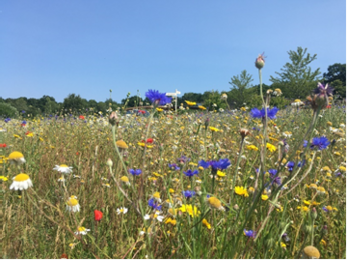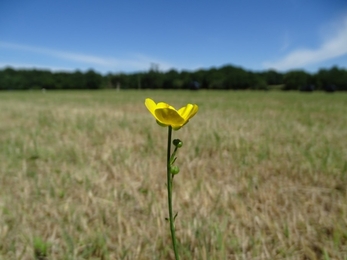Three months have passed since my last entry and the time has flown! I can’t quite believe it's September and I have now been with the Trust for almost four months. Today I’d like to bring some positivity, and hopefully inspiration, to your day.
One thing I have particularly loved observing over the last few months is habitat creation in the form of planting wildflower meadows or simply leaving wide wildflower-rich margins around an arable field. These actions really do make a difference to our beautiful, but perhaps underappreciated, insects.
There is now mounting evidence to show that insects are declining at an alarming rate, with one long-term study (published in 2017) showing that insect biomass has reduced by 75% in 27 years in Germany. When you think about insect ecology, however, it starts to make sense: consider the scale on which habitats have been fragmented and degraded, the impacts of climate change, and the over-use of pesticides.
I said I wanted to bring positivity though, right? So the good news is, it can be super easy to make a difference and attract a whole host of critters to your patch. Amongst all the countryside reserves and rewilding sites my job has brought me to, one of my favourites to visit has been an unlikely candidate – the grounds of a crematorium! Southern Co-op have done the most fantastic job of creating and maintain swathes of wildflower meadow in the grounds of The Oaks Crematorium in Havant.
What could have simply been left as plain green lawn is now a haven for insects and other wildlife. Because the owners allowed the meadows to bloom all summer, and didn't mow the land prematurely, I have been able to watch and observe as the range of species foraging on the wildflowers changes over time, when different flowers bloom in different months.




